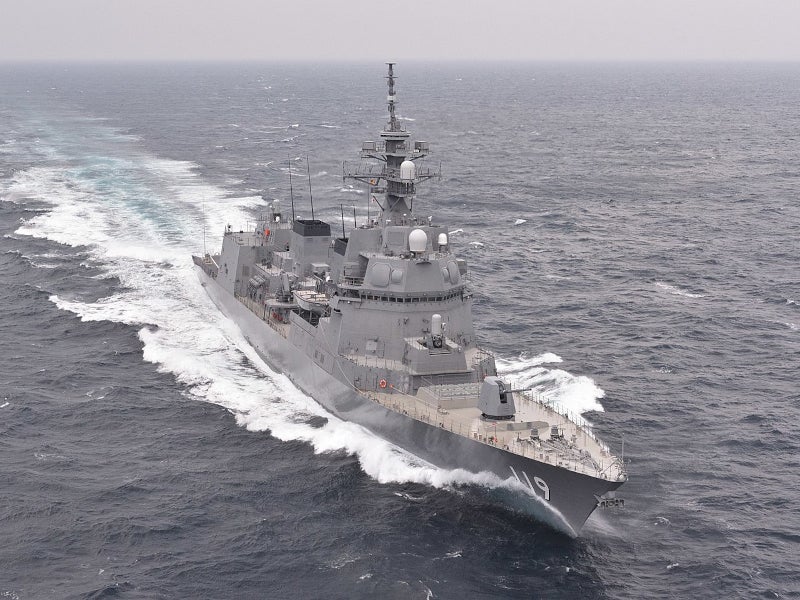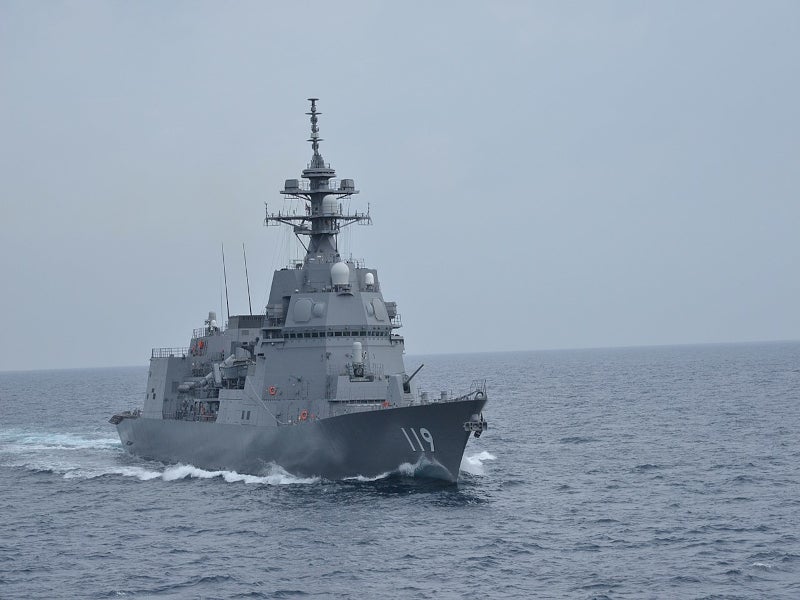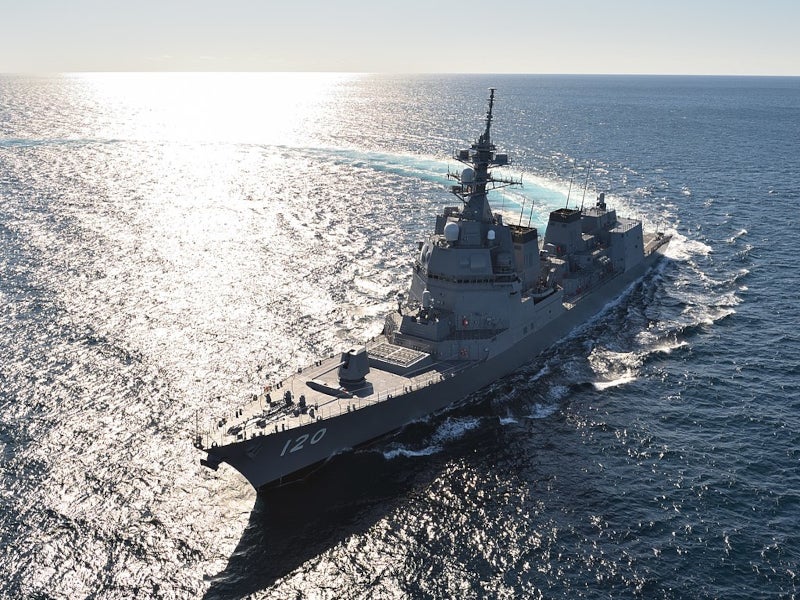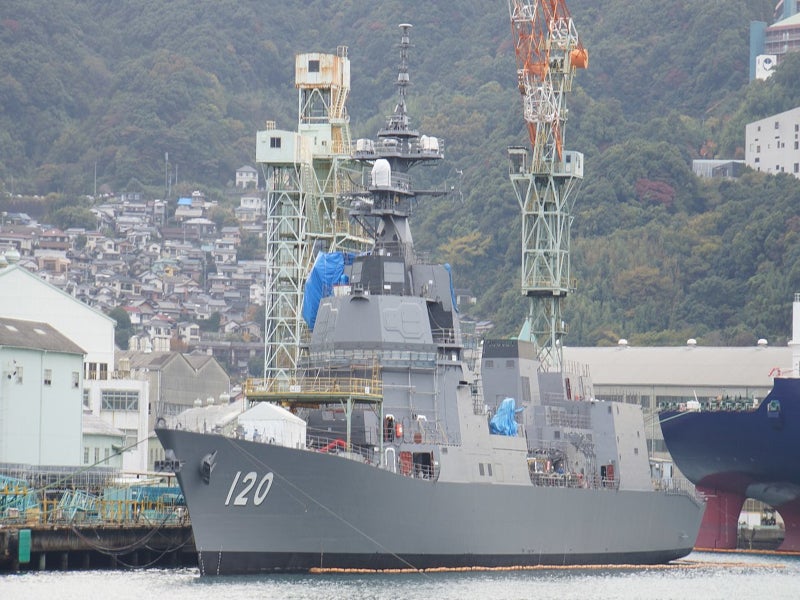Asahi-class destroyers, previously designated as 25DD-class, are multi-purpose destroyer ships built by Mitsubishi Heavy Industries (MHI) in the Nagasaki shipyard in Japan.
The destroyers are based on the Akizuki-class (19DD) destroyers and used by the Japan Maritime Self-Defense Force (JMSDF) for anti-submarine warfare (ASW) missions.
The JMSDF procured two Asahi-class destroyers, named JS Asahi and JS Shiranui, in response to a decline in the number of Hatsuyuki-class destroyers in its fleet.
Asahi-class destroyer ship design and features
The Asahi-class ships are designed with improved anti-submarine search capabilities, including bistatic and multi-static capabilities to detect submarines.
The destroyers are the first vessels in the Japanese fleet to be fitted with modified FCS-3A multi-functional radar, featuring gallium nitride-active electronically scanned array (GaN-AESA) technology for improved performance.
The vessels are equipped with periscope detection radar, for detecting submarine periscopes, as well as a capacity-enhancing towed array sonar system with a wider receiving band.
A sonar suite, including the OQQ-24 hull-mounted sonar and OQR-4 variable depth sonar, is also featured on the vessels.
The vessels in the class have an overall length of 151m, width of 18.3m, depth of 10.9m and draft of 5.4m. The standard displacement of the vessels is 5,050t, and the accommodation capacity is 220 crew members.
Procurement and commissioning
JS Asahi (DD-119) was procured for JPY70.1bn ($716m). The procurement process began in 2013.
The keel-laying ceremony for the vessel took place in August 2015, and the ship was launched in October 2016. JS Asahi started sea trials in July 2017 and was commissioned in March 2018.
The procurement of JS Shiranui (DD-120) began in 2014. The ship’s cost was estimated at JPY72.9bn ($715.9m). The keel of the vessel was laid in May 2016.
JS Shiranui was launched by MHI in October 2017. It began sea trials in July 2018 and was commissioned in February 2019.
Armament on board Asahi-class destroyers
The Asahi-class vessels can accommodate a Mitsubishi-built SH-60K helicopter to conduct ASW missions.
Weapon systems on board include two triple 324mm torpedo tubes, a BAE Systems Mk45 mod 4 127mm main gun, eight Type 90 anti-ship missile launchers and two Phalanx 20mm close-in weapon systems.
The destroyers are also fitted with 32 Mk41 vertical launch system (VLS) cells for launching RIM-162 Evolved SeaSparrow anti-ship missiles (ESSM) and Type 07 VL-ASROC anti-submarine missiles.
Propulsion details
The Asahi-class destroyer comes with a combined gas turbine electric and gas turbine (COGLAG) hybrid propulsion system, which connects two General Electric (GE) LM2500 gas turbines with two 2.5MW electric motors. The turbines provide an output of 62,500 pferdestarke (PS), which is equivalent to 61,645hp.
COGLAG combines gas turbine-based mechanical propulsion with electric propulsion to improve fuel efficiency and operational range. It also extends the cruising range and endurance of the ship while reducing its life cycle cost.
The ships can travel at a maximum speed of 30k.
Participation in exercises
JS Asahi, the lead Asahi-class ship, took part in a multilateral exercise, called Pacific Vanguard, off the coast of Guam in May 2019. The exercise, which featured the navies of the US, Japan, Australia and the Republic of Korea, included combined manoeuvres, live firing, replenishment at sea, and defensive counter-air and ASW drills.
JS Asahi and JS Kongo represented the JMSDF in a bilateral exercise with the US Navy’s Theodore Roosevelt Carrier Strike Group off the coast of Okidaito Island in January 2021.
In November 2021, the Asahi-class ship was also part of a JMSDF contingent involved in a bilateral training exercise with the US Navy’s amphibious assault ship, USS America (LHA 6), to strengthen the Japan-US alliance. The ships participated in precision manoeuvring and integrated surface warfare training off the coast of Kyushu in the East China Sea.
JS Shiranui, the second Asahi-class vessel, also took part in several bilateral and multilateral exercises with the US Navy, Royal Navy, Royal New Zealand Navy, Royal Canadian Navy, Vietnam Navy and Royal Netherlands Navy. The exercises aimed to strengthen the cooperation of JMSDF with other navies.







